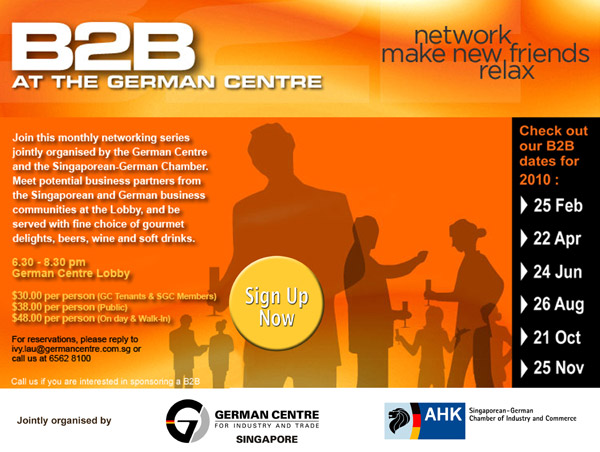- Category: January - February 2010
 Social media marketing is not about taking one’s branding and messages and splaying them across social media sites or just about setting up a presence in Facebook or Twitter. Instead you must understand the essence and ethos of social media—the culture of participation at its heart—and harness and embed that in your marketing and business processes. Again, the platform of participation is what has transformed marketing— changing not just the rules of the game but the game itself with new players, new tactics, new values, and a broader scope.
Social media marketing is not about taking one’s branding and messages and splaying them across social media sites or just about setting up a presence in Facebook or Twitter. Instead you must understand the essence and ethos of social media—the culture of participation at its heart—and harness and embed that in your marketing and business processes. Again, the platform of participation is what has transformed marketing— changing not just the rules of the game but the game itself with new players, new tactics, new values, and a broader scope.
And while it has always been true that people haven’t trusted companies and their messaging the important distinction to be drawn is that they’re now empowered to tune out your messages and have a locus, at scale, for those feelings—online in open forums where their comments and experiences can be shared and found by anyone in the world.
This is not to say the end goal has changed. It remains the same: creating a customer. As stated most succinctly by Peter Drucker: “Because it is the purpose to create a customer, any business enterprise has two—and only two—basic functions: marketing and innovation.”
How to get going
Start with the realization and acceptance that everyone now has a voice—all your employees (not just your direct reports), all your customers (not just your biggest), and, of course, your detractors.
What that means: everyone has become a content creator or has the potential to be one.
According to research from Forrester, which was published in their popular book Groundswell, 32% of adults are either creators (they create web pages, maintain blogs, etc.) or critics (they comment on blogs, they write reviews, etc.). Which means that if you want to succeed in this new world, you need to engage those people—by meeting them where they are (on their own turf) or by creating a platform that you make available for them, i.e., a community.
- If you want to increase word of mouth and build good will, you’ll also need to give up on the control and “corporate speak” and give users and customers the tools to create their own stories—about their interests, and your market and even about you.
- If you want them to help one another (which is in your best interest) you need to empower them with tools and features that enrich the discussions they are having and connections they are making.
- Your brand must live and breathe integrity to earn customers’ trust (84% of marketers agree that building customer trust will become marketing’s primary objective; 1 to 1 Media survey of the 1 to 1 Xchange panel, April 2008)
- And if you want them to help you design better products, you need to bring them inside your product innovation process.
In all cases mentioned above, you need to extend the edges of you marketing processes to include and enlist them.
Three Common Mistakes in Social Media
The good news is that those getting up to speed on social media have the benefit of learning from the successes and mistakes of others. Three common mistakes people make:
- The build-it-and-they-will-come fallacy—This happens when a company focuses too single-mindedly on the tools and forgets to pre-populate their community with valuable content out of the gate. If an early community member comes to a community that doesn’t have compelling content, she will leave disappointed and never come back.
- The let’s-keep-it-small—so-it-does-not-move-the needle phenomenon—Some companies seem to get into a permanent state of pilot when it comes to social media marketing programs. At some point you either need to move on and scale, or decide that social media marketing is not for you and shut it down.
- The not-invented-here syndrome—This can happen when a very strong community already exists, and the company tries to create a new one and lure members to their own platform. In some cases it makes more sense for that company to engage where the community already hangs out and affiliate with them instead of trying to compete with them. A good example of that is how Tivo engaged with a vibrant community that was already in existence.
Entry Points
To give yourself the best shot at success, start where your company feels most comfortable. There’s no magic bullet, no one-size-fits-all solution to where companies should dive in to social media. Ultimately it comes down to knowing what’s best suited for your company and culture and only you can know what’s right. A few scenarios that Awareness Inc, highlights include:
- Your company doesn’t need reams of research to justify jumping in. You believe that social media marketing is transformative, accept that marketing as we knew it has changed, and believe that your company needs to become an active participant in market conversations to reach your prospects. This could start as a skunkworks project that, if successful, can expect the full support of your CMO and marketing execs.
- Your company needs numbers and market validation to compel leadership to act. Projects perceived as cutting edge, such as social media marketing programs, will require considerable internal education, the endorsement of external analysts and consultants, and a directed strategy before they get backing. Rollouts will be methodical with well defined and measurable pilots, well supported by management once there’s buy-in, and include frequent pulse-takings.
- Your company views social media as a new and innovative extension of traditional marketing efforts. You’ve tried a few social media marketing experiments on YouTube and Facebook with varying results. You’re also facing challenging economic times and viewing this as an opportunity to dig even deeper into social media and expand and complement existing traditional marketing programs by redirecting staff to engage more deeply with social media tools. You’re open to new programs and aim to include and convert individuals from other departments to increase organizational buy-in.
As you can see, these are very different starting points—these and others are all valid, nothing to be ashamed of, and don’t guarantee or doom success. What is critical is to recognize where one is and align one’s social media programs with the culture of the company.
Possible Programs & Formats
Again, the needs of your company’s audience will dictate which platform or social media marketing strategy makes the most sense, i.e., is your audience interested in content? Community? Professional networking? This depends of what makes sense for your company and its marketing strategy. Be sure to create “social” content that people can comment on, connect to, and easily share via social sharing sites such as Digg and Facebook.
A few suggestions:
- Content: your target market is interested in unique perspectives and useful data that make them smarter. Arm them with information and insights by launching a blog on a topic of interest to them.
- Transactions: you want to attract users in your market who are looking to buy/sell/trade goods, services, or information. Create a forum for them, e.g., a support site, where they can go to get help or derive value or satisfaction from giving it to others.
- Networking: you want to host a destination where your customers and prospects can convene to share their passions, and pain points. Create a community of interest relevant to your business they can join to find like-minded individuals and organizations.
Measuring Social Media Marketing Programs
When measuring the impact of social media marketing programs on your business, you will run into the same issue as with any other marketing program—how to track the impact of the program on sales. The issue is no different in social media marketing programs than in traditional marketing programs—did the customer buy because they got a recommendation from a friend in your online community or did they buy because they got a coupon in the Sunday paper or a good customer service experience with their last purchase?
Some social media pundits will argue that you need not worry about an ROI for social media marketing programs—arguing that you do not need an ROI for a conversation with a customer.
The problem with that is that most CMOs are seeking accountability and measureable results—even more so in times of economic downturn. In fact, a recent Epsilon CMO survey found that 50% of CMOs use data-driven marketing techniques.
In addition, the 2008 Tribalization of Business Study discovered that the companies that were most satisfied with their community efforts were those that measured the impact of their community programs on their business processes the same way they would measure the impact of any other program on those same business processes.
So if you measure the impact of a certain program by increased store sales, or the impact of another program in customer support by improved customer satisfaction, then measure the impact of social media marketing programs on those business processes the same way. Even if you think the current measurements are wrong, don't try to change them when you roll out a social media marketing program. The fact that the current measurements are well understood and often hardwired within the company culture will ensure that people understand and embrace your social media programs rather than marginalize them as exotic new hype-driven, non-mainstream programs.
It is important to note that while there are costs associated with social media it’s a low number compared to other marketing programs such as advertising.
Conclusion
The Web has, since its inception, been a more social medium than any before it. The explosion of the social Web via blogs, Facebook, Twitter, and other Web 2.0 platforms is seeing the concomitant decline of traditional media as their audience fragments and heads off in the direction of content and communities that more closely align with their granular interests and afford them the human vibrancy at the core of social media.
But get stuck in thinking of social media too traditionally—as merely another medium like those that preceded it, as just another channel into which marketing messages can be pushed—and you’re missing the point and setting yourself up for failure. Rather, it is a new animal altogether, one with an attendant culture of participation that changes the game of marketing from one of a self-interested monologue—you at your customers— to one of a rich, dynamic dialogue between you and your customers and, critically, your customers with each other.
Adapted from a social media marketing whitepaper by Awareness Inc.



